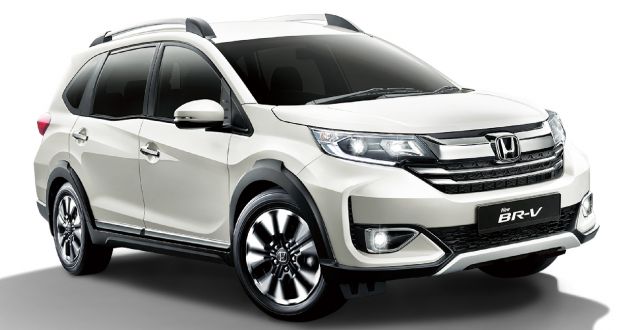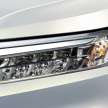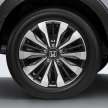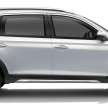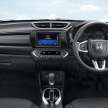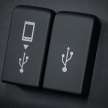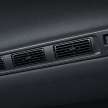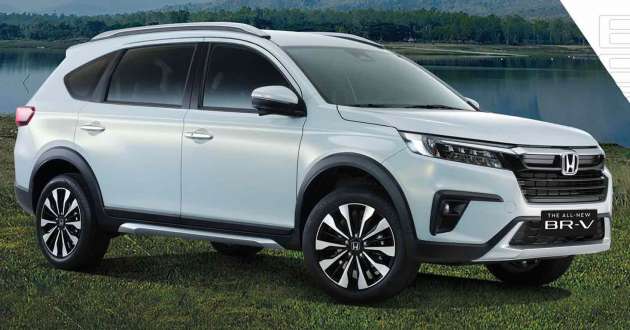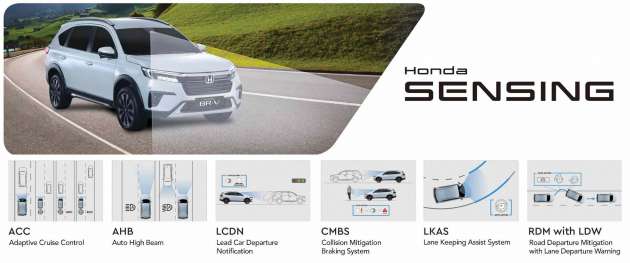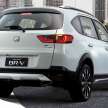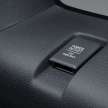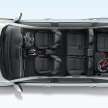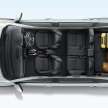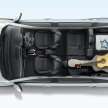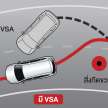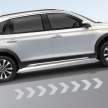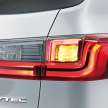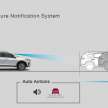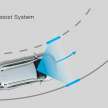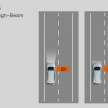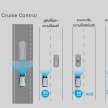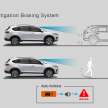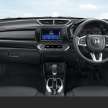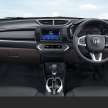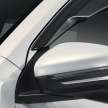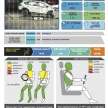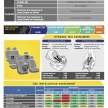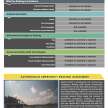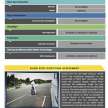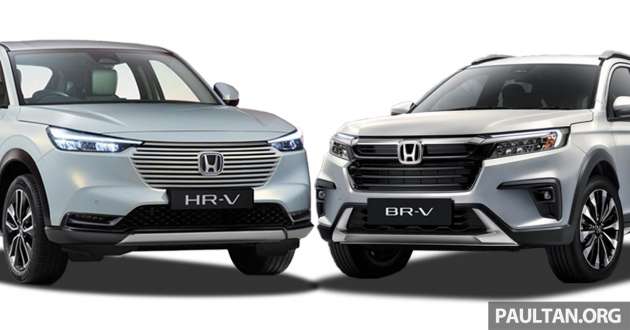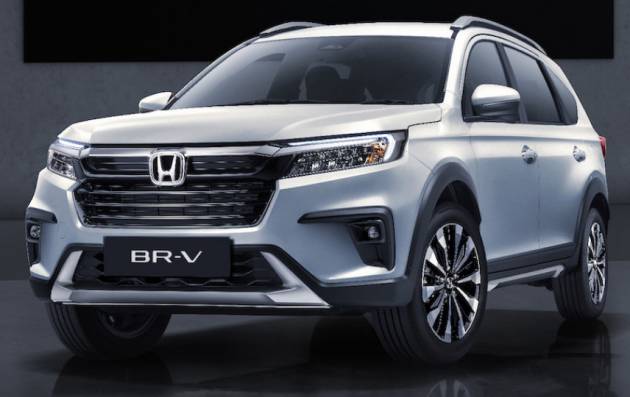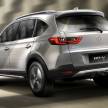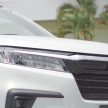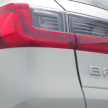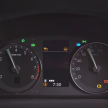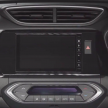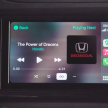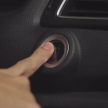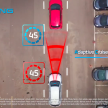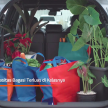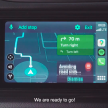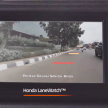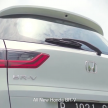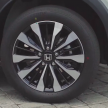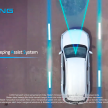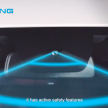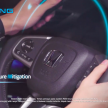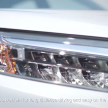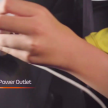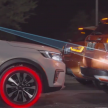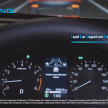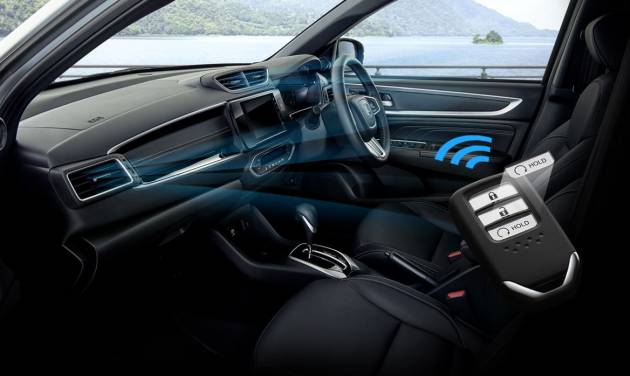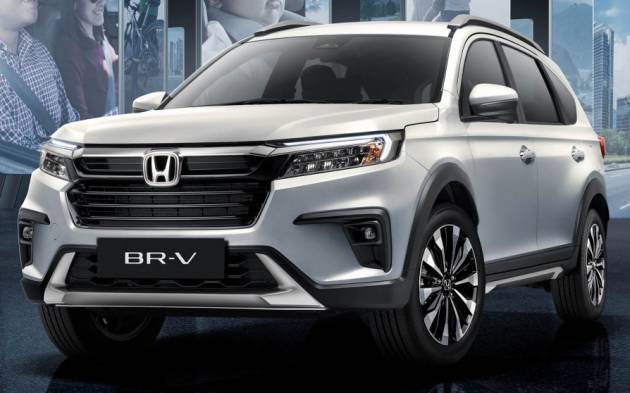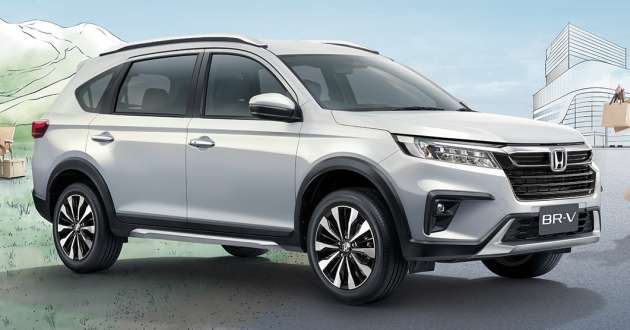
After going on sale in Indonesia last November (the initial reveal took place earlier), the second-generation Honda BR-V has now been announced for Thailand, where it will be offered in two variants.
The starting point is the E, which is estimated to retail at 930,000 baht (RM112,776), while the top-spec EL is expected to sell at 980,000 baht (RM118,839). These projected prices are higher than the first-generation model offered in the kingdom, which was previously priced between 765,000 and 835,000 baht (RM92,769 and RM101,258) across its V and SV variants.
Of course, the all-new BR-V is a lot more sophisticated than the original, both in terms of design and standard equipment. The all-new MPV was previewed by the N7X Concept and boasts a more refined (and rugged) look, while also occupying a larger footprint.
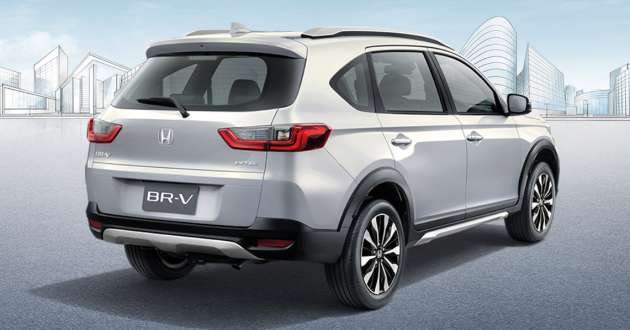
Breaking out the measuring tape, the second-gen model measures 4,490 mm long, 1,780 mm wide, 1,685 mm tall and has a wheelbase that spans 2,695 mm. For context, the BR-V we have here is 4,457 mm long, 1,735 mm wide, 1,677 mm tall and its wheelbase only stretches to 2,662 mm.
Both variants of the BR-V in Thailand will be powered by the same engine, which is a 1.5 litre naturally-aspirated four-cylinder petrol unit that outputs 121 PS at 6,600 rpm and 145 Nm of torque at 4,300. As standard, the DOHC i-VTEC mill drives the front wheels via a CVT.
Equipment-wise, the E gets 16-inch wheels (with 215/60 profile tyres), electric power steering, ventilated front disc brakes and rear drum brakes, automatic LED headlamps, LED DRLs, chrome outer door handles as well as electrically-adjustable side mirrors with integrated turn signals.
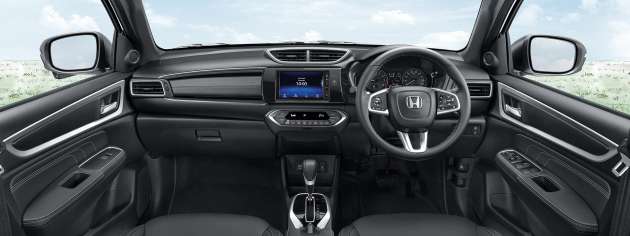
Inside, the base option comes with a 4.2-inch multi-info instrument cluster display, two-tone (Black and Mocha Grey) combination leather upholstery, automatic air-conditioning (with rear ceiling vents), keyless entry and start (with Honda Smart Key and remote engine start), a seven-inch Display Audio touchscreen (with Android Auto and Apple CarPlay), a multi-function leather steering wheel and four speakers.
The EL naturally gets more items on top of the E, including larger 17-inch wheels (with 215/55 profile tyres), a piano black front grille, LED front fog lamps, auto-folding side mirrors, paddle shifters, all-black combination leather upholstery, two more speakers for a total of six as well as additional convenience features (illuminated vanity mirrors, more power accessory outlets and front seatback pockets).
The higher prices (estimated) are sort of justified when you consider that the Honda Sensing suite is standard across the BR-V range. Standard fit includes Collision Mitigation Braking System (CMBS), Lane Keeping Assist System (LKAS), Road Departure Mitigation System With Lane Departure Warning (RDM with LDW), Auto High-Beam (AHB), Adaptive Cruise Control (ACC) And Lead Car Departure Notification System (LCDN).
Also part of the safety and driver assist list are Honda LaneWatch, an all-seat seatbelt reminder system, a rearview camera, passive systems (VSA, ABS, EBD, brake assist, hill start assist, walk away auto lock) and a minimum of four airbags – the EL gets additional side curtain airbags for a total of six.
In Thailand, the BR-V will be available in three colours, namely Premium Sunlight White Pearl, Crystal Black Pearl and Taffeta White. As you’d expect, there are a range of Modulo accessories offered to customers too, including a tailgate garnish, window visors, front fender garnish, a stainless steel exhaust pipe finisher, side mirror garnish, and fitted sunshades for second-row passengers.
After the HR-V, the BR-V is expected to be the next model that Honda Malaysia launches here, although there’s been no indication as to when this will take place. For now, what do you think of the MPV’s Thailand specifications? What are you hoping for if and when the BR-V comes here? Upon arrival, the BR-V will have no shortage of competition, with the Toyota Veloz and even the latest Perodua Alza (if we widen the price bracket) being notable rivals.


